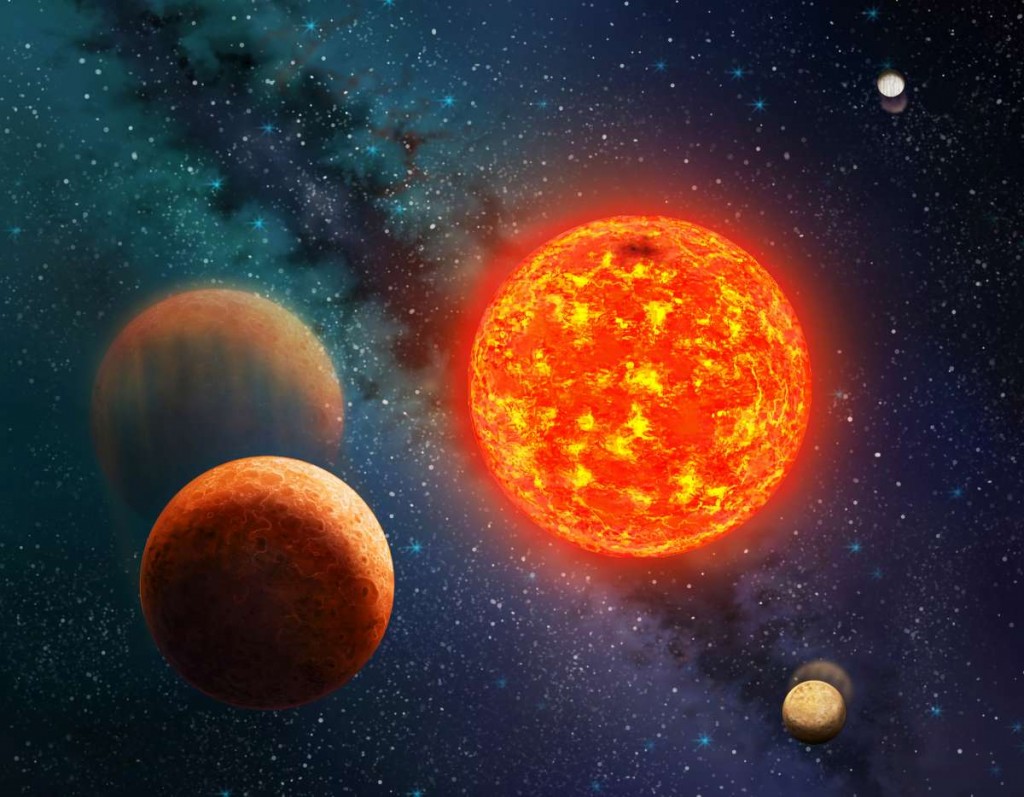
Astronomers have founds a Mars-sized exoplanet at roughly 200 light years from our solar system and measured its mass and size with the help of the NASA’s Kepler spacecraft.
It’s a remarkable discovery that could prove to unveil important information regarding small worlds orbiting distant stars. There is no shortage of them as space researchers have so far identified more than 1.800 planets and exoplanets that orbit stars that aren’t the Sun.
The newly discovered planet, dubbed “Kepler-138b” has been found to be just a little lighter than Mars, but the difference is significant enough to make it the lightest space object orbiting a typical star that researchers have stumbled upon so far. It’s rocky, hot, and it orbits a distant red dwarf star known as Kepler-138. The star itself is also orbited by two (2) other planets – Kepler-138c and Kepler-138d.
Gregory Laughlin from UC Santa Cruz is a scientists who was not involved in the study, but who assigns it great value, writing that: “The detection of such a small exoplanet in a tight orbit could help to clarify how we fit into the big picture”.
Mars is 57 percent (57%) smaller than planet Earth, which means that Kepler-138b is also smaller than the Earth. One of the biggest questions that space scientists have right now is whether or not distant planetary systems are similar to our very own solar system.
Determining the mass and size of Kepler-138b has not been an easy task as it’s much easier for scientists to measure gas giants such as Jupiter and Saturn, than it is to measure small, rocky worlds such as Mars and Mercury.
The approach that they have for assessing the mass of an exoplanet is to examine the strength that their gravitational fields tug with on their stars. But since small planets have small masses, they also have weak tugs that are difficult to detect.
Daniel Jontof-Hutter, lead author and astronomer at Pennsylvania State University in University Park, gave a statement informing that Kepler-138b has the same apparent size that we would perceive if we looked at a golf ball that was 10 million kilometers [6.2 million miles] away.
The researchers first determined the size of Kepler-138b by looking at the amount of blocked starlight in a group of 150.000 stars. When astronomers notice of pattern of starlight blockage, it signals the existence of a planet and informs how big it is.
They then had to determine its mass. They did this by looking at the gravitational tugs of all three (3) planets – Kepler-138b, Kepler-138c and Kepler-138d – and studying how each of these planet’s tugs influence the lengths of each of their orbits. Since a planet’s mass is linked to how powerful its gravitational pull is, the researchers were able to determine the masses of all three (3) planets.
The results showed that the mass of Kepler-138b is roughly 6.7 percent (6.7%) that of the Earth’s and two thirds that of the Red Planet’s. Due to how difficult it is for astronomers to measure the mass of exoplates, few of them have had them measured. Jontof-Hutter shared that Kepler-138b is the first exoplanet smaller than the Earth to have both its size and its mass measured.
As a result, Kepler-138b is very likely to become the prototype for small close-in planets.
The lead author stresses that all three (3) planets orbiting Kepler-138 are too close to the star to retain any water. Temperatures on the surface of the outermost planet are believed to be 250 degrees Fahrenheit (120 degrees Celsius), while those on the surface of the innermost planet are believed to be 610 degrees F (320 degrees C).
Kepler-138c has a mass that’s 197 percent (197%) that of the Earth’s, making it bigger than out planet, while Kepler-138d has a mass that’s 64 percent (64%) that of the Earth’s.
Image Source: popsci.com

Leave a Reply
You must be logged in to post a comment.